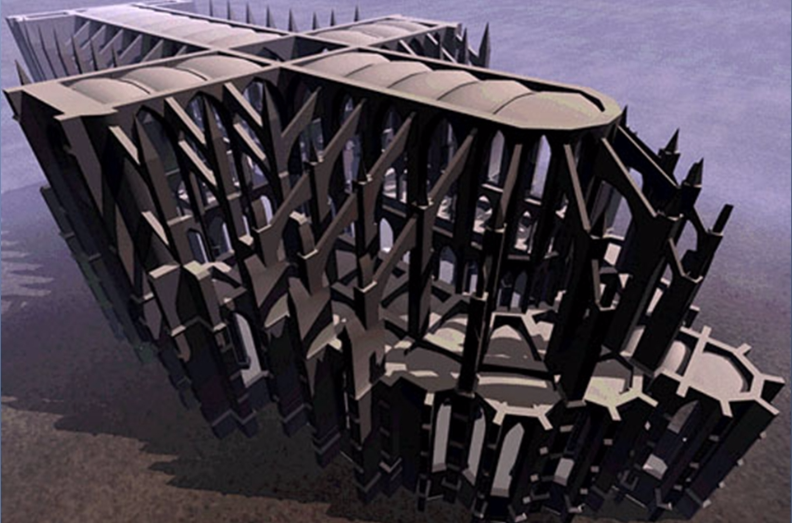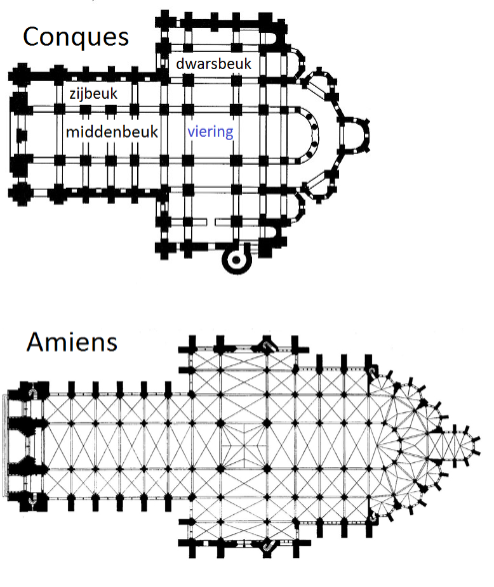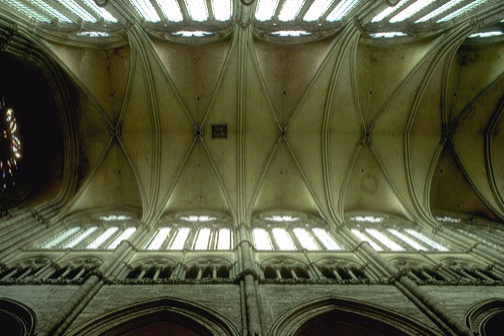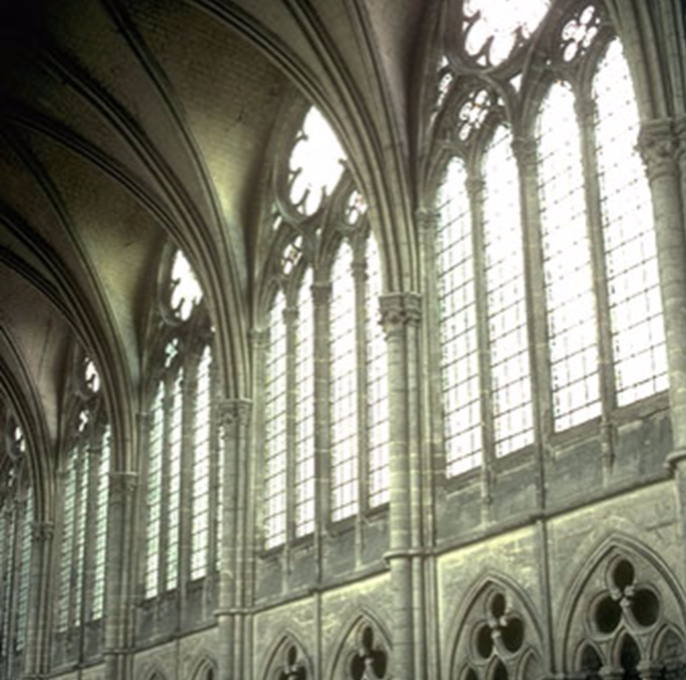from supporting walls to a skeleton
cross vault
In romanesque style the walls not only protected the inside against the outside, they had to support the vaults to. Creating circular arcs in the intersection of groined vaults has got revolutionary conequences. By reinforcing these intersection lines they became the supporting elements of the vault. Groined vaults became cross vaults.
The walls lose their supporting role which is taken over by a skeleton of edges, flying butresses, abutments an vertical piers.


plan
You can easily see the change in the basic plan of a church.
In the romanesque Ste-Foy in Conques a long nave is supported by side aisles and is crossed by a transept. Nave, side aisles and transept are roofed by barrel vaults. The nave and the transept intersect in the square crossing. The intersecting barrel vaults form a groined vault.
In the goti cathedral of Amiens (ended in 1260) the nave is diveded in narrow rectangular bays, roofed by cross vaults. The side aisles to are roofed by cross vaults. The eastern part is enlarged, surrounded by a circle of chapels. 100 jaar after Conques by creating a skeleton the medieval builders could create vaults that reach to a height of 43 m. Stone walls are replaced by large windows in stainded glass.

